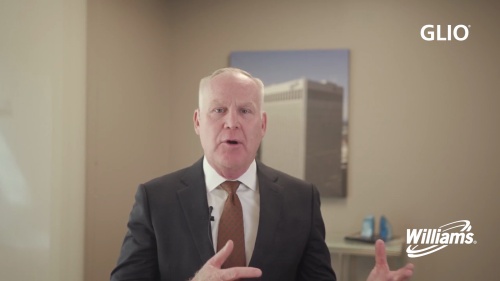
Williams CEO Alan Armstrong says he’s never seen demand for energy so high.
The surge is driven by electrification, industrial markets and data centers, along with the need to back up intermittent power sources like wind and solar, he said during a webcast with Global Listed Infrastructure Organization (GLIO), moderated by Frank Greywitt of DWS Group.
“Across the board, I’ve never seen a time like this,” Armstrong said. “I’ve been with Williams for 38 years and in the gas pipeline and gathering business for that length as well. And I’ve never seen a time like this where we’ve seen so much demand for services in so many areas.”
With the additional retirement of coal-fired power generation, natural gas is going to remain a major energy source.
Armstrong said Williams benefits with its vast infrastructure and storage portfolio.
And expansion projects like Williams’ Southeast Supply Enhancement (SSE) will help ensure that America homes and businesses have access to abundant, affordable and clean natural gas.
SSE is an expansion of the existing Transco pipeline’s capacity in Virginia, North Carolina, South Carolina, Georgia and Alabama. Located in our existing pipeline right of way, it will deliver additional natural gas volumes to our customers for power generation and local distribution across the rapidly growing southeast region.
“This is an area that is really dying for new gas resources because they are trying to retire a lot of coal-fired generation,” Armstrong said. “It’s the largest project we have from an earnings standpoint.”
Armstrong said Williams investment in storage also drives long-term results as the U.S. exports more LNG to other countries.
“We look to the things that’ll drive pricing long term,” he explained. “And what we saw was natural gas demand for the last 10 years had grown about 43%. The transmission capacity to serve that demand had grown by about 25%, but the storage had only grown by 2% during that same timeframe.”
Armstrong said it’s clear that natural gas is not going away, especially as the industry and Williams continues to reduce emissions through programs like NextGen Gas, which measures and verifies natural gas emissions across the supply chain to ensure that natural gas is not only responsibly produced, but also gathered, processed, stored and transported to end users with the lowest environmental impact possible.
“We’re excited about what we can contribute to methane emissions reductions and to greenhouse gas emissions writ large,” he said.
“It fires a lot of our employees up, to show that they’re leading the way on doing things that help the environment. I can absolutely see the energy that we get back in our company from people working in a place that they know is trying to do things right,”

